Share This Article
Learn more
Google Pixel 8 vs Xiaomi 14: OVERVIEW
Last update on 2025-05-16 / Affiliate links / Images from Amazon.
This time, we’re looking at two potent phones that are also smaller than the majority of flagship models. We’ll contrast the Google Pixel 8 vs Xiaomi 14. The original Xiaomi 14 model (for the Chinese market) debuted back in October along with the Pixel 8, while the global version only recently went on sale. These two phones are really powerful, but they are also very distinct from one another.
Not only do they feel and appear different in the hand, but their internals are also somewhat different. First, as usual, we’ll enumerate their specifications. We will then contrast their designs, displays, functionality, battery life, audio quality, and cameras. Having stated that, let’s begin!
Google Pixel 8 vs Xiaomi 14: SPECS
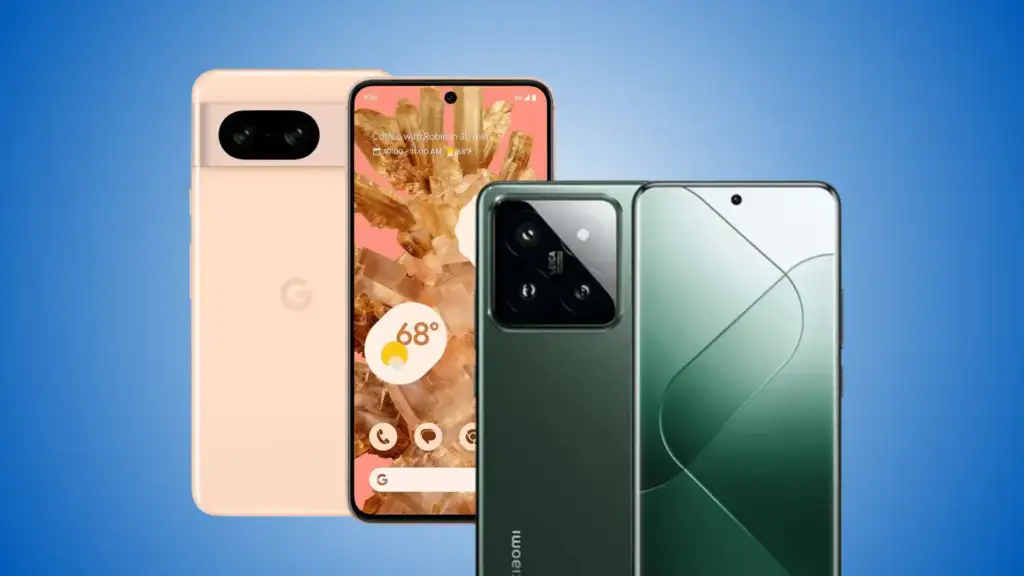
Google Pixel 8 Key Specs
Xiaomi 14 Key Specs
Let’s read on in the following parts to get a better understanding of how the Google Pixel 8 vs Xiaomi 14 compare, and maybe you’ll have enough arguments to determine which one is best for you.
Google Pixel 8 vs Xiaomi 14: DESIGN

These two smartphones are constructed from glass and metal. A vegan leather backplate is also included with the Xiaomi 14, but only in China. We shall therefore just address its glass variant. Both of these phones have flat screens with tiny bezels, but the Xiaomi 14’s bezels are uniformly thinner. A camera hole in the center of the displays on both devices is also present.
If we flip them around, you’ll notice a lot more variances. The back of the Google Pixel 8 has a camera visor. The phone frame and its left and right sides are attached to that visor. There are two cameras within, and the visor is shielded by metal. The rear camera island of the Xiaomi 14 seems much more typical. It is square in shape and situated in the upper-left corner. The rear of both camera configurations does protrude. The Pixel 8’s camera visor design prevents it from wobbling on the table, though.
On the right side of both smartphones are the physical buttons. On the Pixel 8, they are positioned a little differently, with the power/lock button situated above the volume up/down buttons. On the Xiaomi 14, it’s the opposite. Both gadgets use optical in-display fingerprint scanners. Additionally, they are both IP68 certified for resistance to dust and water. Slightly taller, wider, and thinner is the Xiaomi 14. Given that it sports a bigger display than the Pixel 8, it is understandable. However, the screen-to-body ratio is greater.
Both gadgets have a wonderful tactile sense in the hand, but they are also very distinct. The Pixel 8’s sides are rounded, but the Xiaomi 14’s are flat with chamfered corners. Both gadgets have a lot of slickness. Both of them are rather comfortable to handle and use, though.
Google Pixel 8 vs Xiaomi 14: DISPLAY
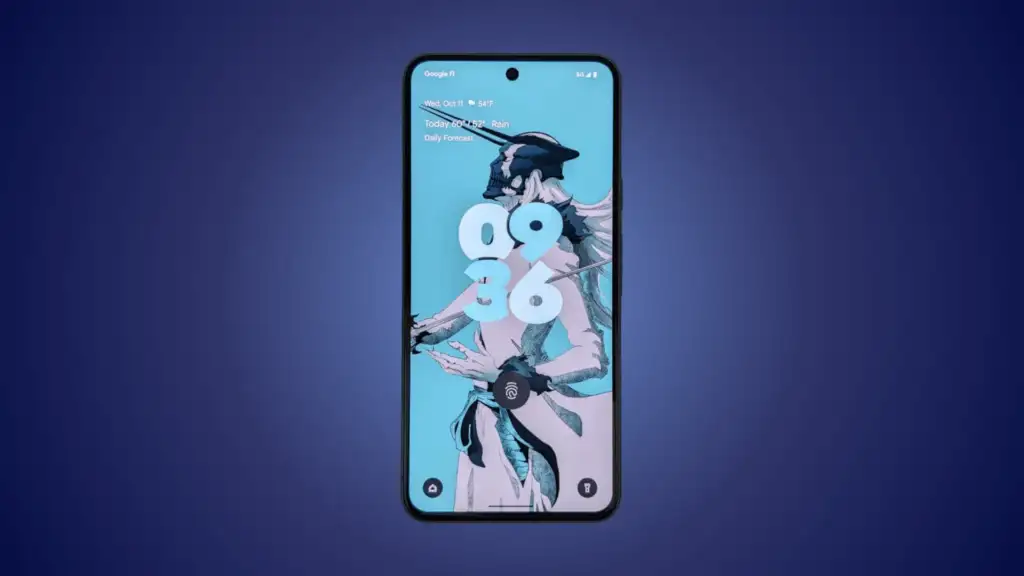
A 6.2-inch fullHD+ (2400 x 1080) OLED display is part of the Pixel 8 package. With a refresh rate of 120 Hz, this panel is flat. It can display material in HDR10+, with a maximum peak brightness of 2,000 nits. With a 20:9 aspect ratio, the display’s screen-to-body ratio is approximately 85% of the device. For protection, the Gorilla Glass Victus is placed on top of the display.
Editor’s Choice
On the other hand, the 6.36-inch 2670 x 1200 LTPO OLED display is a feature of the Xiaomi 14. This display features an adjustable refresh rate of up to 120 Hz and is also flat. Both Dolby Vision and HDR10+ content are supported here. This display may theoretically reach a maximum brightness of 3,000 nits. This device has the same 20:9 display aspect ratio as the Pixel 8. With the Gorilla Glass Victus placed on top of the screen, the Xiaomi 14 boasts a screen-to-body ratio of around 89%.
These are really two really good exhibits. Both of them offer excellent viewing angles, are vibrant, and are plenty sharp. Both panels have excellent touch sensitivity. In addition to having quite high PWM dimming to protect your eyes, the Xiaomi 14’s panel does get a little brighter. On both screens, there are deep blacks. Though the Xiaomi 14’s panel does have a few advantages, both displays are outstanding overall.
Google Pixel 8 vs Xiaomi 14: PERFORMANCE
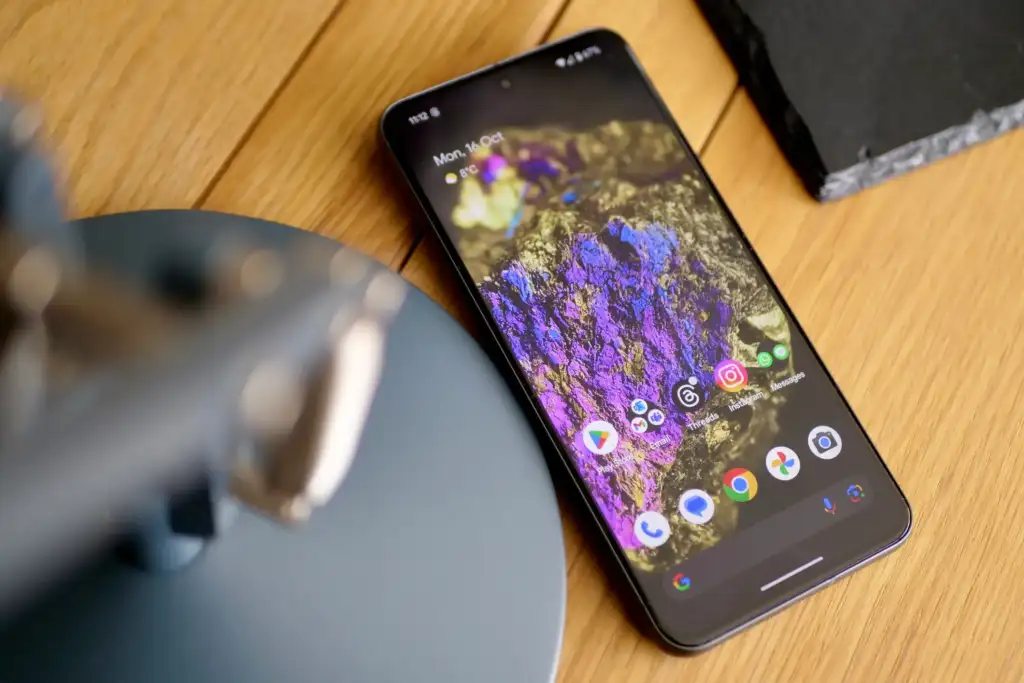
Google powers the Pixel 8 with its Tensor G3 processor. As of the time this article is being written, that is Google’s most recent chip. This processor is 4nm. In addition, the Pixel 8 makes use of UFS 3.1 flash storage and 8GB of LPDDR5X RAM. The Qualcomm Snapdragon 8 Gen 3 chip, a 4nm processor, powers the Xiaomi 14. Right now, that is the company’s most potent chip. Additionally, the phone makes use of UFS 4.0 flash storage and LPDDR5X RAM.
While both smartphones have excellent performance, the Xiaomi 14 felt a little snappier in contrast. It seems as though it can perform some tasks one second quicker than the Pixel 8. That should come as no surprise given that it makes use of a speedier processor and more powerful storage. Still, they both perform admirably when not compared side by side. They excel in multitasking and pretty much any typical usage situation you can imagine.
The Xiaomi 14 is the superior device amongst the two in terms of gaming. The Snapdragon 8 Gen 3 handles games far better than the Tensor G3, which isn’t actually designed for gaming. That even applies to the most difficult games available. However, the Pixel 8 performs admirably while you’re playing light-hearted games. While gaming, both smartphones do become very warm, but we never experienced overheating or anything like.
Google Pixel 8 vs Xiaomi 14: BATTERY
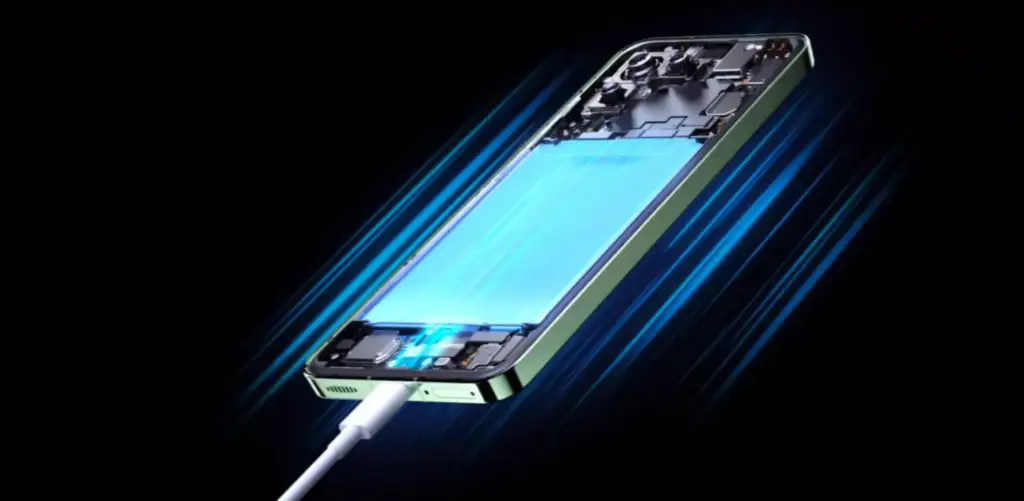
Google’s Pixel 8 handset has a 4,575mAh battery on the inside. The Xiaomi 14 packs in a 4,610mAh unit. These battery capacities may not seem huge but do note that the display sizes on these two phones are smaller than on the vast majority of other flagship-grade devices. The battery life on both phones is good, though not outstanding. We did notice that the Xiaomi 14 offers more in the battery life department, though.
Most days, the Pixel 8 gave us between six and seven and a half hours with the screen on. Even up to seven hours were possible at first, but then something happened. However, the battery life does noticeably decrease if you use 5G frequently. In our experience, the Xiaomi 14 can last for more than seven hours on the screen, but not much longer. With comparable usage, the Xiaomi 14 has continuously had longer battery life, and 5G had less of an impact.
The Xiaomi 14 absolutely outclasses the Google Pixel 8 in terms of charging. TenW reverse wireless charging, fiftyW wireless, and ninety-watt wired charging are supported. Included in the package with the phone is a 90W charger. Reverse wireless charging, 18W wireless, and 27W wired charging all supported by the Pixel 8. The package doesn’t come with a charger. Essentially, the Xiaomi 14 is fully charged by the time the Pixel 8 hits the 50% charge point.
Google Pixel 8 vs Xiaomi 14: CAMERAS
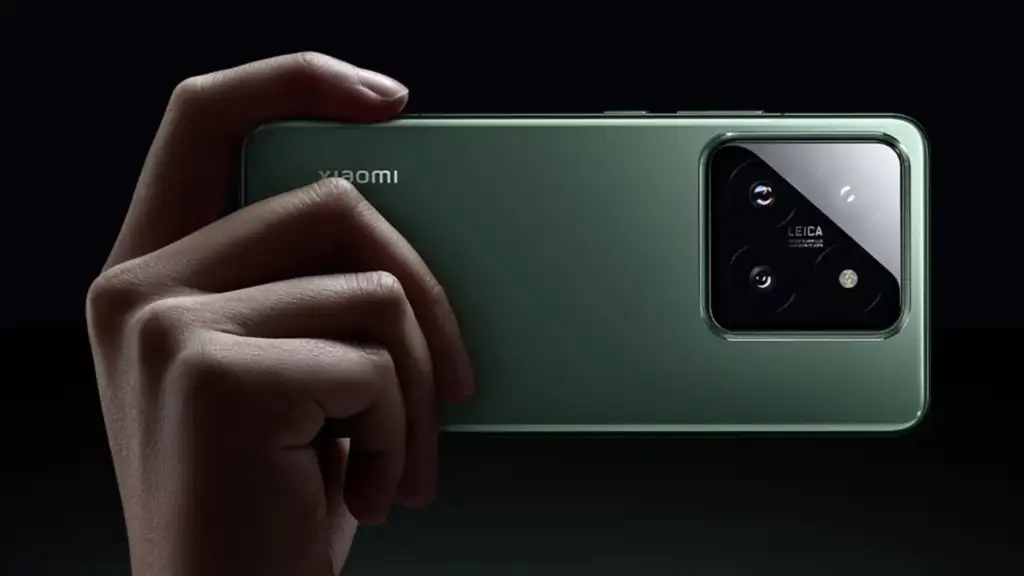
A 12-megapixel ultrawide camera with a 126-degree field of view and a 50-megapixel primary camera are featured on the Google Pixel 8. The Xiaomi 14, on the other hand, sports three cameras: a 50-megapixel primary camera, a 50-megapixel ultrawide camera with a field of view of 115 degrees, and a 50-megapixel telephoto lens with an optical zoom of 3.2x. Along with Leica’s competence in other fields, like image processing, Xiaomi’s cellphone also has Leica’s lenses.
These two cellphones have incredibly powerful photographic capabilities. They do yield significantly different outcomes. The Pixel 8 tends to produce images that are highly contrasty, processed, and bright all at once. Although the Xiaomi 14 also uses contrast, the pictures certainly appear more realistic. For a certain photographic aesthetic, you can even use the “Leica Authentic” setting. Both smartphones perform admirably in HDR environments.
The primary cameras on both phones perform admirably in dim lighting. However, the Xiaomi 14 does manage street lighting a little bit better. Additionally, it favors somewhat darker photographs to resemble actual life, whereas the Pixel 8 typically brightens images. Both during the day and at night, their ultrawide cameras perform admirably, though we did like the Xiaomi 14’s camera’s output better. The Pixel 8 doesn’t even have a telephoto camera, but its primary camera can zoom in to some extent without losing much information, particularly in well-lit environments. In this regard, the Xiaomi 14 clearly prevails in the telephoto comparison.
Google Pixel 8 vs Xiaomi 14: AUDIO
Both of these cellphones have a set of stereo speakers. Both smartphones feature loud enough speakers, albeit the Xiaomi 14 has a slight edge in that area. Nonetheless, they are highly optimized on both ends.
These two phones don’t have any kind of audio port. Bluetooth allows you to operate completely wirelessly, or you can use their Type-C connectors for wired headphone hookups. While the Xiaomi 14 has Bluetooth 5.4 support, the Google Pixel 8 has Bluetooth 5.3 support.
- Pixel 8 is the helpful phone engineered by Google; the new Google Tensor G3 chip is...
- Unlocked Android 5G phone gives you the flexibility to change carriers and choose your own data...
- Google Pixel 8 has a fully upgraded camera with advanced image processing to reveal vivid...
- International Model - No Warranty in US. USA ONLY COMPATIBLE WITH TMOBILE / MINT, TELLO GLOBAL...
- Dual Nano sim 5G (NO SD SLOT) :5G: n1/2/3/5/7/8/20/25/28/38/40/41/48/66/75/77/784G: LTE FDD:...
- Leica professional optical lensLEICA VARIO-SUMMILUX 1:1.6-2.2/14-75 ASPH.Leica main cameraLight...
Last update on 2025-05-16 / Affiliate links / Images from Amazon.
Why Trust Factic
Berry Alex has been evaluating, testing, and reviewing tech, Household and travel items for several decades. He compiled all of the testers’ input, conducted extra research to assess each phone mount’s essential features and overall functioning, and reviewed professional profiles and verified customer reviews for each product.



